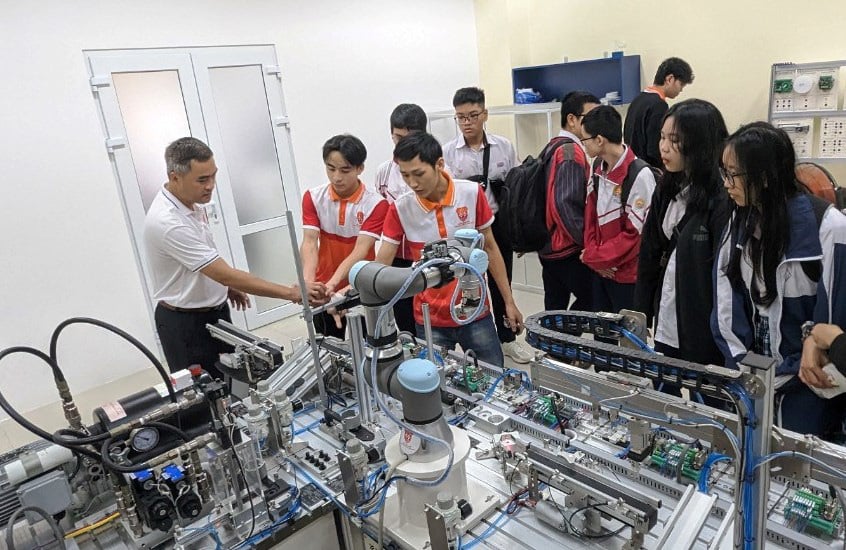
Young people visit the semiconductor microchip technology training area at the Faculty of Engineering and Technology, Hue University - Photo: NHAT LINH
No economic cooperation between Korea and other Southeast Asian countries can compare to that between Korea and Vietnam. More than 50% of Korea's total exports to Southeast Asia are directed to Vietnam, and nearly 40% of Korea's total investment in Southeast Asia is also concentrated in the S-shaped strip of land.
Traditionally, Korea exported semi-finished goods to China and Southeast Asia, where the final products were manufactured and then exported to Europe, the US and other markets. But this structure is no longer working effectively, forcing Korea to come up with a new strategy.
Semi-finished goods previously sent to China will now be sent to Southeast Asia to set up new production networks there. In this scenario, Vietnam will become an even more important partner for South Korea.
Recently, as Indonesia has emerged as an important mineral supply chain, South Korea’s interest in Indonesia has increased. However, the production networks established by South Korean companies in Vietnam cannot be easily relocated, so Vietnam remains the focus in Southeast Asia.
Moreover, from Korea's perspective, cooperation with Vietnam is also very important in semiconductor production.
Although Vietnam is interested in the back-end process (the final process in semiconductor manufacturing - PV), it is lacking a highly skilled workforce. For Vietnam to participate in the global semiconductor supply chain, the most important factor is talent.
In addition, highly qualified human resources are also important to transform the economic structure from dependence on simple, low-wage labor to the production of advanced, high-value-added products. The Vietnamese government has shown interest in this and has set a target of training 50,000 semiconductor engineers.
If human resources are developed through cooperation with Korea, a semiconductor cooperation belt can be formed between Korea and Vietnam. This could even lead to the formation of a new semiconductor production network, spanning Japan, Korea, Vietnam and surrounding Southeast Asian countries.
In the process of developing human resources, Vietnam needs to pursue educational initiatives in conjunction with semiconductor manufacturing companies. This way, companies can employ graduates immediately after they leave school.
Wages for Vietnamese workers will certainly continue to increase in the long term. Vietnam’s population growth rate is decreasing and with a total fertility rate of 1.7, the population is expected to decrease. Some even argue that Vietnam has begun to enter the aging stage, so wage increases are inevitable.
However, if productivity can be increased or more high value-added products can be produced, wage increases will not be a problem and Vietnam will have enough attractiveness to balance these rising costs.
The world is still changing rapidly. Korean investments in Vietnam are still manufacturing-centric and have contributed significantly to Vietnam’s economic development.
But as Vietnam’s population declines, there will be limitations in running a manufacturing-focused economy. Therefore, Vietnam needs to promote new industries that create high added value.
To attract high-tech industries, we must first ensure adequate power supply. Not only artificial intelligence but also semiconductor manufacturing requires a lot of electricity. Therefore, areas that can ensure adequate power will be able to attract more FDI.
Technology protection is a prerequisite for technology transfer to take place and to ensure the encouragement of new technology development.
Because if one company spends huge resources to develop technology and another company uses it without receiving any compensation, no company will be willing to invest. In other words, the technology protection system must be actively prepared.
(Dr. Kwak Sung Il is the Director of the Economic-Security Strategy Department of the Korea Institute for International Economic Policy. He is also one of the main authors of the report "30 Years of Korea-Vietnam Economic and Social Cooperation: Research for Sustainable Future Cooperation").
Source: https://tuoitre.vn/vanh-dai-hop-tac-ban-dan-viet-nam-han-quoc-20240702074457458.htm




![[Photo] 60th Anniversary of the Founding of the Vietnam Association of Photographic Artists](/_next/image?url=https%3A%2F%2Fvphoto.vietnam.vn%2Fthumb%2F1200x675%2Fvietnam%2Fresource%2FIMAGE%2F2025%2F12%2F05%2F1764935864512_a1-bnd-0841-9740-jpg.webp&w=3840&q=75)
![[Photo] National Assembly Chairman Tran Thanh Man attends the VinFuture 2025 Award Ceremony](/_next/image?url=https%3A%2F%2Fvphoto.vietnam.vn%2Fthumb%2F1200x675%2Fvietnam%2Fresource%2FIMAGE%2F2025%2F12%2F05%2F1764951162416_2628509768338816493-6995-jpg.webp&w=3840&q=75)




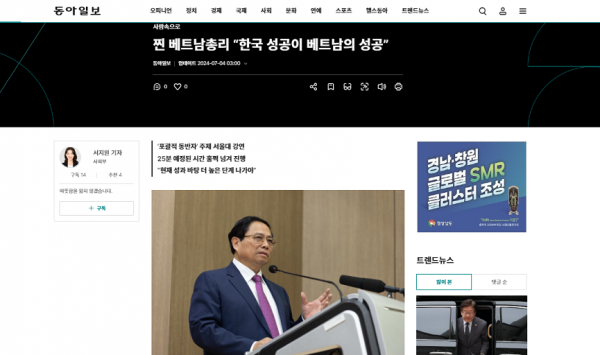





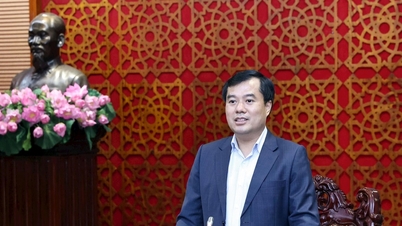

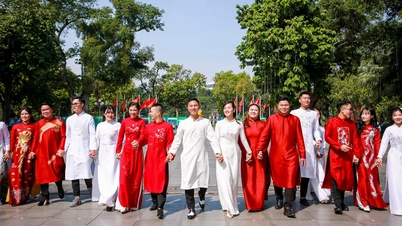

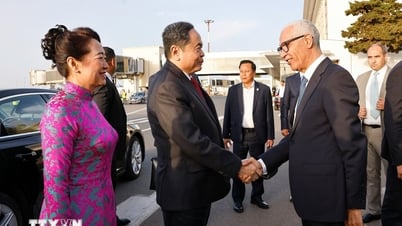

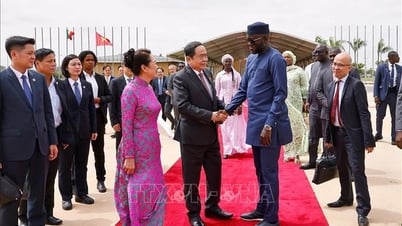

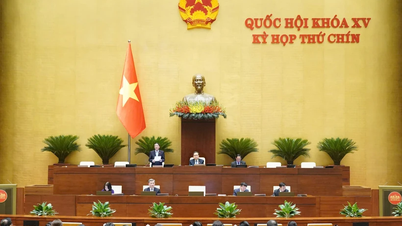
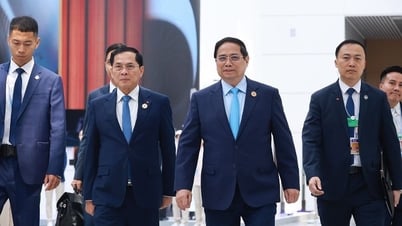






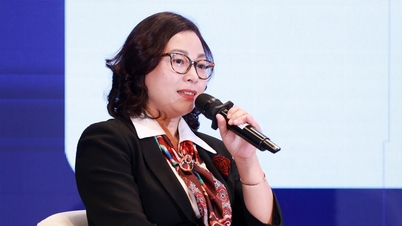
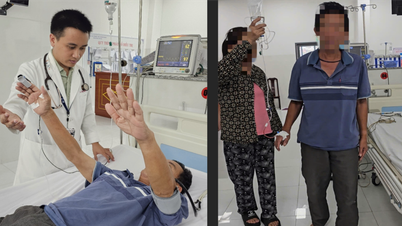





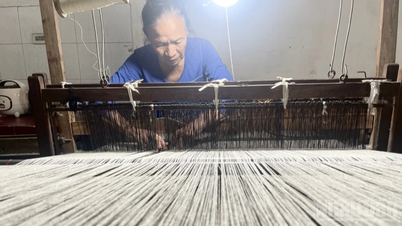


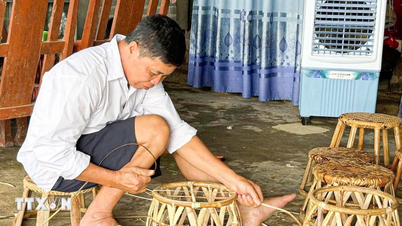







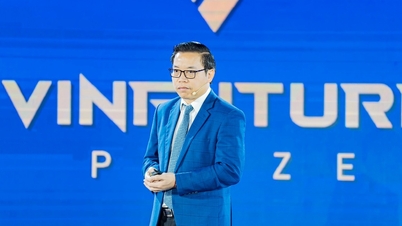

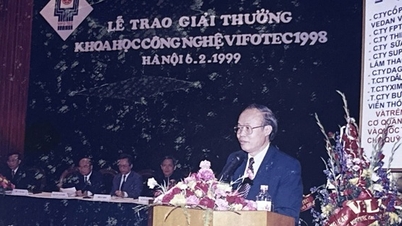

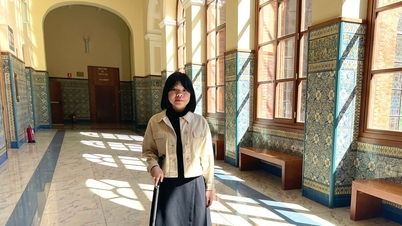

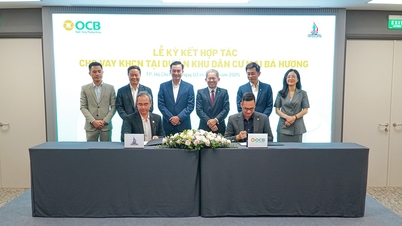
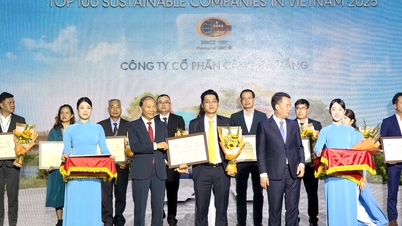
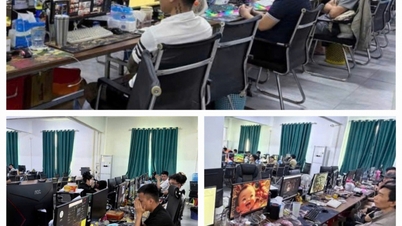
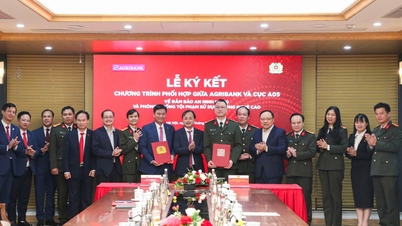

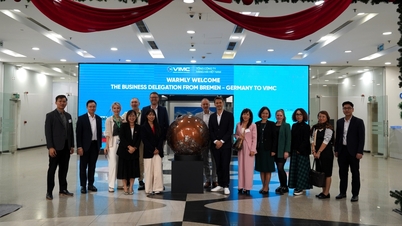
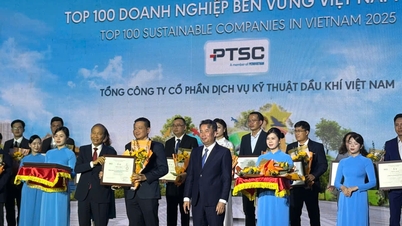






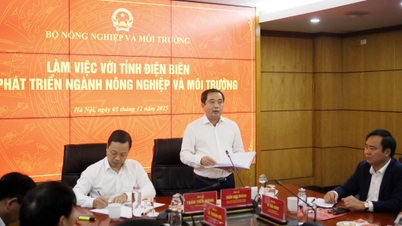






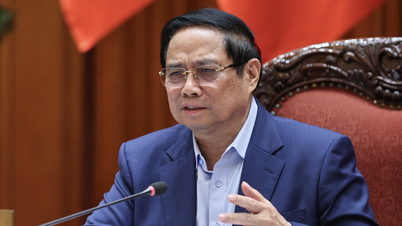
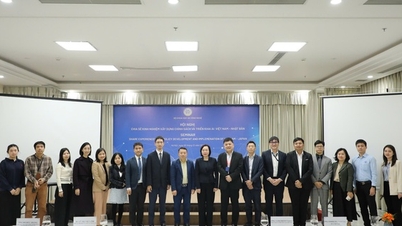
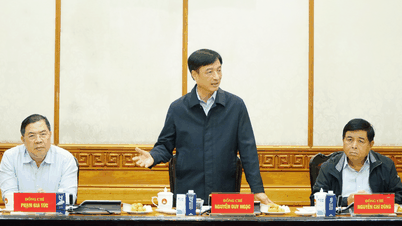

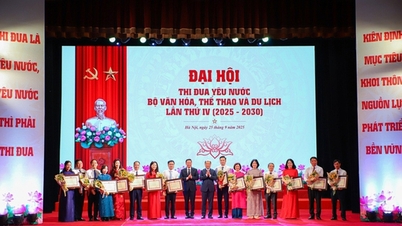

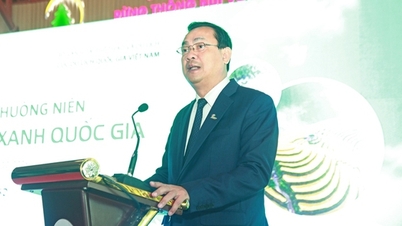
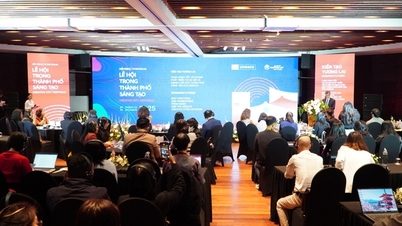

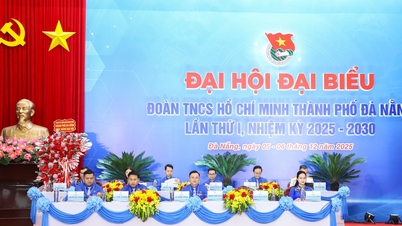

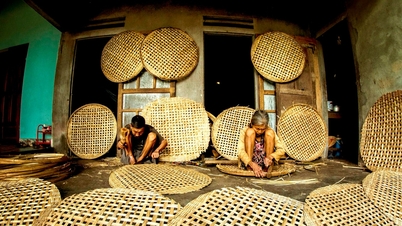


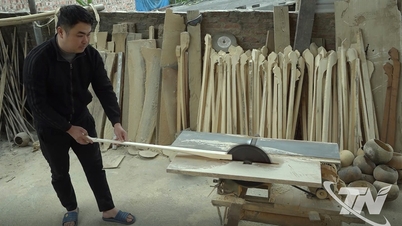


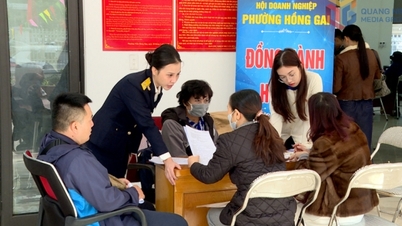


















Comment (0)